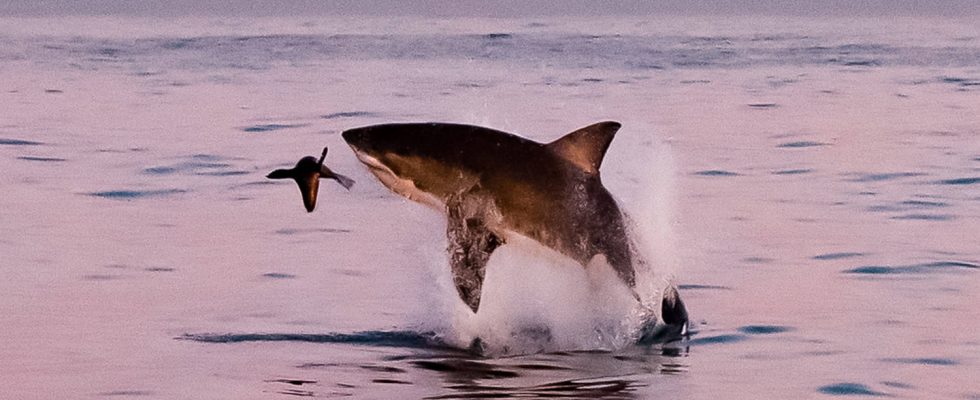A California student made a remarkable discovery that marine biologists have dreamed of for years by photographing a baby white shark. Scoop: It’s scary.
The study of animal behavior is a vital resource for saving endangered species. A list that continues to grow and pushes scientists to continue to develop their knowledge. Sharks are among the particularly threatened species, leading scientists to encourage States to declare some of them as protected. Humans are directly responsible for the decline in shark populations, mainly through intensive fishing. Numerous associations around the world work for the protection of these animals in collaboration with specialized scientists.
However, there remains one aspect of the life of these fish that scientists have not been able to document. This is the birth of sharks. Currently, experts are unable to determine where females give birth to their young, and until very recently, no one had been able to see a newborn in the wild. Yet this is what Carlos Gauna, wildlife filmmaker, managed to achieve off the coast of Santa Barbara in California.
In July 2023, while Mr. Gauna accompanied Philip Sternes, a biology student, in his observations of the waters of the California coast, his drone captured never-before-seen images. The scene, never before seen in the wild, depicts a newborn white shark swimming close to the surface. Carlos Gauna had been studying this area for a while and had already spotted pregnant female sharks there. That day in July, the student was filming a shark in this situation before the female disappeared into the depths. A few moments later, a small shark, approximately 1.5 m long and completely white, appeared on the surface.
The images captured by Carlos Gauna were the subject of a study published in the journal Environmental Biology of Fishes, in collaboration with Philip Sternes. The latter explains that the shark’s reduced size and its rounded fins, similar to those of shark embryos, reflect its very young age. A fact also confirmed, according to the biologist, by the white film which surrounded the shark. The white color of the newborn was a surprise to experts because usually, white sharks have gray backs and only the belly is white. This unusual color is actually the residue of uterine milk produced by the species during pregnancy.
In the images we see that the shark gets rid of this film as it moves. If this hypothesis seems to be the most convincing in the eyes of the two experts, they do not exclude other explanations for this white color. The authors of the study believe that it is not impossible that the animal actually suffers from albinism or a skin disease. They now wish to continue exploring the area, convinced that it is a suitable place for the birth of white sharks. As Mr. Sternes states in the study: “More research is needed. But we would like lawmakers to step in and protect these waters to help white sharks continue to thrive.”

